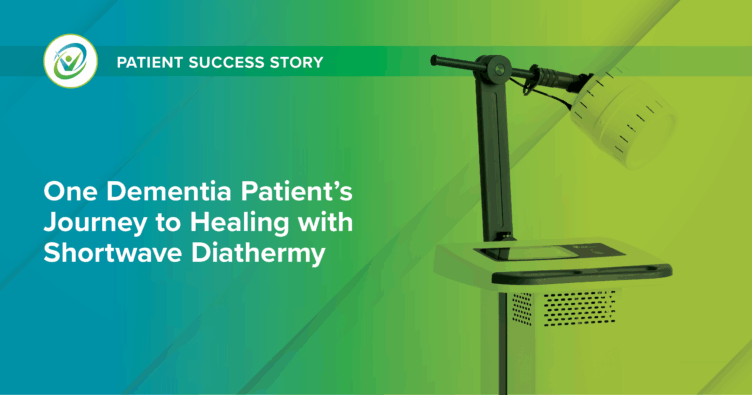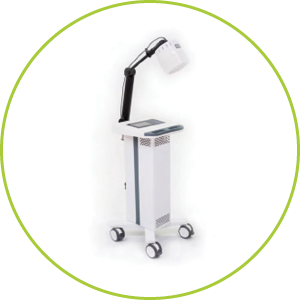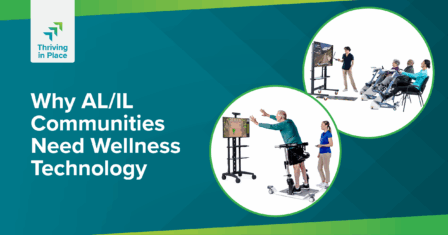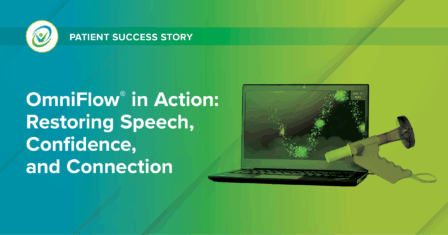One Dementia Patient’s Journey to Healing with Shortwave Diathermy

Harpreet Singh, PT, DPT, MSHA, was met with a complex case while working at a skilled nursing facility (SNF) in Sacramento, California. One of his patients, an 80-year-old woman living with advanced Alzheimer’s disease, struggled with a stubborn stage III pressure ulcer for months. Despite diligent wound care, the ulcer showed minimal improvement. Through innovation and compassionate interdisciplinary care, he was able to resolve this case with the help of ACP’s OmniSWD® Shortwave Diathermy System.
Before Treatment with OmniSWD
This patient’s Alzheimer’s disease left her largely non-verbal, unable to express pain clearly, and entirely reliant on staff for all aspects of daily life. For Dr. Singh, this posed a tricky question as her PT: How could he help this patient heal when her disease so greatly limited her communication, cognition, and mobility? He decided it was time for a new approach.
Augmenting Physical Therapy with Pulsed Shortwave Diathermy
Dr. Singh decided to try combining pulsed shortwave diathermy (PSWD) with traditional physical therapy treatment interventions. Over four weeks, he delivered PSWD to the patient’s sacral ulcer using OmniSWD.
Treatment Protocol
The patient’s clothing in the wound area and the dry dressing were removed. She was positioned side-lying on a mat table where OmniSWD was used to apply PSWD at a sub-thermal dose. The following protocol was followed:
- Carrier frequency: 27.12 MHz
- Pulse frequency: 400 pulses/second
- Pulse duration: 65 µs
- Duty cycle: 4%
- Duration: 30 minutes
- Frequency: 4x/week x 4 weeks
- Average power: 3.9 watts/session
After each PSWD treatment session, the wound nurse applied triad paste and a new dry dressing as prescribed by the patient’s wound care physician.
Additional Interventions
In addition to PSWD, Dr. Singh incorporated a balanced treatment regimen of therapeutic exercises, balance training, posture education, and pressure relief into her treatment plan. To ensure consistent care throughout the day, he relied on interdisciplinary collaboration with the nursing and dietary teams.
Patient Outcome
After four weeks of highly focused treatment, the patient’s outcome exceeded expectations. Her wound had fully closed, and her pain, as measured by the PAINAD scale, dropped to zero. Her sitting balance improved significantly, nearly doubling on objective assessment. Most importantly, she could sit upright again, interact comfortably, and engage with her environment.
On this experience, Dr. Singh had this to share:
This case reminded me that even in a resource-constrained setting like a SNF, thoughtful application of clinical tools supported by an interdisciplinary team can restore both function and dignity. Although PSWD isn’t yet commonplace for pressure ulcer management in long-term care, this experience has shown me its potential, especially for patients with cognitive impairments who can’t voice discomfort or pain.
Ultimately, this patient’s care team wasn’t just able to heal her wound. They were able to restore her comfort, dignity, and presence while finding new purpose in creative problem-solving.
Dr. Singh’s full report is available in The American Journal of Medical Sciences and Pharmaceutical Research.
Ease Pain & Accelerate Recovery with OmniSWD
Empower your therapists to save time and achieve superior patient outcomes with ACP’s advanced OmniSWD Shortwave Diathermy System.
MRK-BLOG-028
Harpreet Singh, PT, DPT, MSHA, was met with a complex case while working at a skilled nursing facility (SNF) in Sacramento, California. One of his patients, an 80-year-old woman living with advanced Alzheimer’s disease, struggled with a stubborn stage III pressure ulcer for months. Despite diligent wound care, the ulcer showed minimal improvement. Through innovation and compassionate interdisciplinary care, he was able to resolve this case with the help of ACP’s OmniSWD® Shortwave Diathermy System.
Latest Updates
Subscribe to stay up-to-date on our latest posts.




